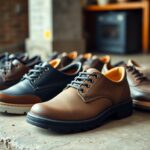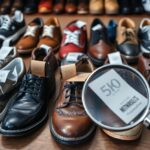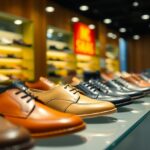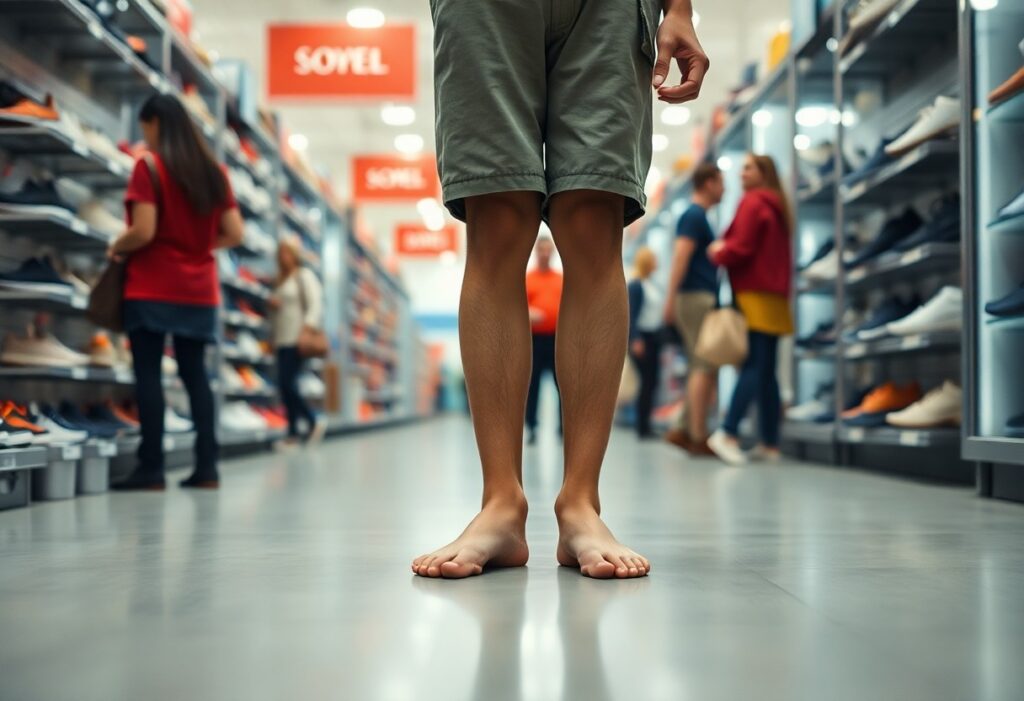
During a demanding retail shift, your feet endure immense strain from constant movement and extended periods of standing. Selecting the appropriate footwear is critical for your overall well-being. If you're tired of experiencing sore feet and inadequate support from your current shoes, consider transitioning to barefoot shoes, which could revolutionize your daily comfort. These advanced, minimalistic designs are crafted to improve workplace comfort by offering natural foot movement and exceptional support that traditional shoes often fail to provide. By enabling your feet to operate as they were biologically intended, you can experience enhanced comfort, reduced fatigue, and potentially lower the risk of long-term foot health issues, particularly during those grueling hours on the sales floor.
Maximize Comfort in Retail with Barefoot Footwear
To understand the unique challenges faced by retail workers regarding footwear, it's important to recognize the physical demands of standing and moving for long periods. Your feet are put under continuous pressure, movement, and strain throughout lengthy shifts, making the selection of the right shoe absolutely essential for both comfort and foot health. The right shoes can significantly mitigate the discomfort often associated with prolonged standing, enabling you to focus on your tasks rather than your pain.
Recognizing Common Foot Problems in Retail Settings
Retail employees typically spend 8 to 10 hours each day standing on hard surfaces, which can lead to severe foot fatigue and the potential development of chronic musculoskeletal conditions. Standard footwear often fails to deliver the necessary support, cushioning, and comfort required for such high-stress work environments, resulting in discomfort for many workers. Understanding these footwear shortcomings is essential for making informed choices that prioritize your health and productivity.
Evaluating the Financial Burden of Conventional Footwear
Many retail workers find themselves spending between $100 and $200 on traditional work shoes that quickly wear out and often do not provide adequate support for essential foot health. This frequent need for new shoes creates an ongoing financial burden as employees search for options that alleviate discomfort and maintain their performance levels. Investing in better long-term footwear can lead to significant savings over time, both financially and in terms of health.
The True Costs of Choosing Conventional Footwear
However, the costs associated with traditional footwear extend well beyond just their initial price. Poorly designed shoes can result in chronic pain, potential foot deformities, and decreased productivity in the workplace. Over time, the medical expenses related to treating foot problems can accumulate, making the switch to barefoot shoes a more sustainable and financially savvy long-term solution for retail employees. Investing in quality footwear is not just an expense but a crucial component of maintaining your health and efficiency on the job.
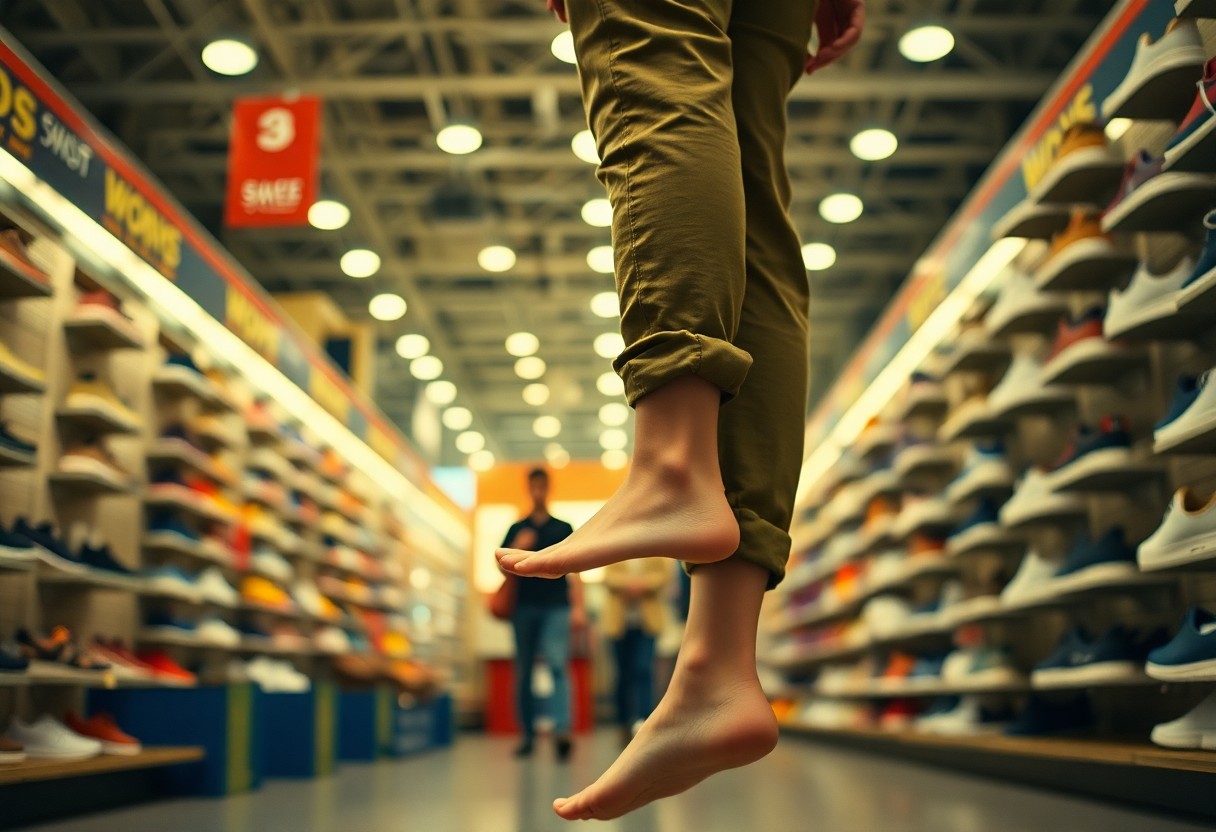
Join the Barefoot Shoe Movement for Enhanced Comfort
The rise of the barefoot shoe trend represents a revolutionary shift in footwear design, especially for those working in retail. By challenging traditional shoe manufacturing practices, these innovative shoes present a new perspective on promoting foot health and enhancing comfort. As you explore this new approach, you will discover how footwear can significantly improve your natural movement and overall wellness during those long retail hours.
Prioritizing Natural Movement in Footwear Design
The difference between conventional shoe designs and barefoot shoes lies in their underlying philosophy. Your feet are inherently designed for natural movement, and barefoot shoes are engineered to restore this essential movement pattern. By allowing your toes to spread and your foot to flex naturally, these shoes help you reconnect with your body’s natural biomechanical intelligence, leading to improved foot health and overall comfort.
Exploring the Benefits of Zero-Drop Footwear Technology
Within the footwear industry, zero-drop technology represents a groundbreaking innovation. This design principle ensures that your heel and forefoot are maintained at the same elevation, fostering a more natural posture and minimizing unnecessary strain on your joints during long retail shifts.
It's essential to understand that zero-drop technology fundamentally transforms your weight distribution. By removing the elevated heel commonly found in conventional footwear, you engage more muscle groups, improve your posture, and potentially reduce the risk of repetitive strain injuries that are prevalent in retail settings. The flat sole design promotes a more balanced and aligned walking pattern, which can lead to increased comfort and less fatigue during extensive periods of standing and walking.

Revolutionizing Footwear: Understanding the Anatomy of Ideal Shoes
This new perspective on footwear challenges conventional design principles. Barefoot shoes are carefully designed to mimic your foot's natural shape and movement, providing footwear that works in harmony with your body’s biomechanics instead of against them. By emphasizing natural foot mechanics, these shoes offer a fundamentally different experience regarding comfort and performance, particularly suited for the retail work environment.
Essential Features for Optimal Foot Functionality in Shoes
The construction of barefoot shoes focuses on critical design elements that prioritize your foot’s natural functionality. Wide toe boxes allow ample space for your toes to spread, while zero-drop soles maintain a flat profile that supports your body’s natural alignment. These shoes are lightweight, flexible, and designed to enable your feet to move and strengthen naturally, offering you a truer walking experience that enhances foot health and comfort.
Striking the Balance: Ensuring Protection While Enhancing Sensation
Finding the right equilibrium between foot protection and sensory feedback is crucial in barefoot shoe design. Minimalist soles provide sufficient protection from the ground to prevent injuries while still allowing you to feel the textures and variations of the terrain beneath your feet. This careful consideration guarantees that you receive optimal foot protection without sacrificing the essential sensory experience that walking provides.
Ultimately, the protection versus sensation debate in barefoot shoes reveals a sophisticated approach to foot health. By employing a thin, flexible sole, these shoes enhance proprioceptive awareness—your body’s ability to sense its position and movement. This results in improved balance, better posture, and a more natural gait, which is particularly beneficial during long shifts in retail environments.
Transitioning to Barefoot Shoes: Embrace a New Footwear Experience
For retail professionals considering the transition to barefoot shoes, this change involves much more than simply swapping footwear. You will fundamentally rethink how your feet engage with the ground. This process requires understanding your body’s natural movement patterns and allowing your feet to regain their innate strength and flexibility. By choosing barefoot shoes, you are actively investing in better foot health and improved body alignment.
Navigating the Transition Phase
The initial weeks of adjusting to barefoot shoes will require patience and a gradual approach. Your feet will encounter new ranges of motion and muscle activation that traditional shoes may have previously restricted. You may initially experience some discomfort as your foot muscles strengthen and adapt, which is a normal aspect of the transition. It’s advisable to start with shorter wear durations and gradually increase the time in your new footwear.
Understanding the Timeline for Adaptation
Contrary to traditional shoe wisdom, transitioning to barefoot shoes necessitates a thoughtful approach. Most retail workers may require 4 to 8 weeks to fully adjust to the minimalist shoe design. During this adaptation period, you will notice gradual enhancements in foot mechanics, muscle strength, and overall comfort.
This adaptation timeframe can vary based on individual foot health and previous footwear habits. Consistent use and mindful progression are essential for a successful transition. Many users report significant improvements in foot strength and reduced fatigue at work within the first month. Your body will gradually develop stronger foot muscles, improved proprioception, and more natural movement patterns, ultimately leading to greater comfort during those lengthy retail shifts.
Unlocking Performance Benefits with Barefoot Shoes
Once again, barefoot shoes prove to be more than just an alternative for retail professionals. These minimalist shoes provide remarkable performance benefits that traditional footwear cannot match. By allowing your feet to move freely, you’ll experience enhanced mobility, increased sensory feedback, and less fatigue during long retail shifts. The lightweight design and flexible sole facilitate more efficient movement, potentially enhancing your overall productivity in the workplace.
Boosting Energy Efficiency in Your Workday
Switching to barefoot shoes can dramatically change your energy expenditure. Your muscles will operate more efficiently with these minimalistic designs, reducing the unnecessary strain imposed by bulky, constricting footwear. By promoting a more natural walking motion, you’ll conserve energy throughout your retail shift, allowing you to feel less fatigued and more capable of handling demanding tasks.
Enhancing Posture Through Natural Alignment
A journey toward improved alignment begins with barefoot shoes. These shoes encourage a more natural stance by eliminating heel elevation and integrating a zero-drop design. This promotes better body mechanics, helping you maintain an upright and balanced posture throughout extended retail shifts.
Consequently, the posture advantages of barefoot shoes extend beyond immediate comfort. By allowing your feet to function naturally, these shoes assist in realigning your entire kinetic chain, from your feet to your ankles, knees, hips, and spine. This natural alignment could alleviate long-term musculoskeletal strain, helping to prevent chronic pain and improve overall body mechanics for retail workers who spend prolonged hours on their feet.
Key Footwear Considerations for Retail Professionals
Your work environment necessitates shoes that combine comfort, performance, and a professional appearance. Barefoot shoes offer a distinctive solution for retail employees by providing exceptional comfort while maintaining a polished appearance. These shoes support your natural foot mechanics, potentially reducing fatigue and enhancing overall job performance. By opting for barefoot shoes, you're making a commitment to both your foot health and your professional image.
Addressing Workplace Footwear Specifications
Footwear standards in retail often include requirements for slip resistance, durability, and comfort. Barefoot shoes meet these criteria by featuring flexible soles that offer excellent grip, lightweight construction, and ergonomic design. They empower you to move effectively during long shifts while protecting your feet from potential workplace hazards.
Balancing Style with Professional Presentation
For retail workers, maintaining a polished and professional look is vital. Barefoot shoes now come in a wide array of styles that seamlessly fit into workplace dress codes, ensuring you can present yourself professionally while enjoying unparalleled foot comfort.
Furthermore, contemporary barefoot shoe designs have made significant advancements. Modern models feature sleek, professional aesthetics that align with traditional work footwear while offering superior comfort and health benefits for your feet. Many brands produce minimalist shoes in classic colors and styles, making them nearly indistinguishable from standard professional shoes.
Transform Your Work Life with the Right Footwear
Embarking on the path to comfortable, healthy feet in retail begins with a well-informed understanding of your footwear options. Barefoot shoes present a groundbreaking approach to workplace comfort, facilitating natural movement, strengthening your feet, and reducing strain. You'll appreciate the lightweight construction, zero-drop alignment, and spacious toe box that accommodate your body’s natural mechanics. By choosing barefoot shoes, you are making a meaningful investment in your foot health, mobility, and overall quality of life, turning your workday from a painful struggle into a fulfilling experience. Your feet will genuinely thank you for this thoughtful and informed decision.
The Article Top Shoe Choice for Retail Workers: Why Barefoot Shoes Are Worth Trying appeared first on My Shoes Finder
The Article Barefoot Shoes: The Best Choice for Retail Workers Was Found On https://limitsofstrategy.com


